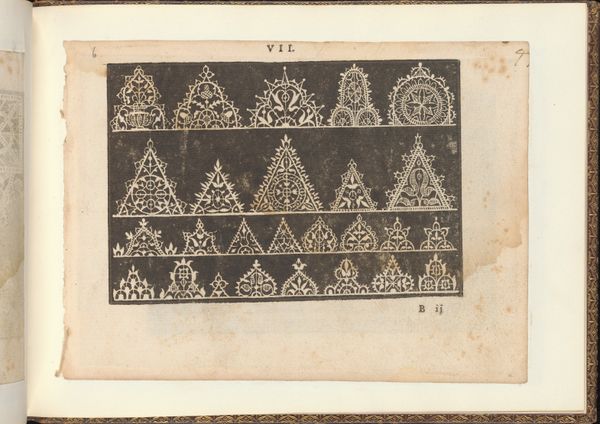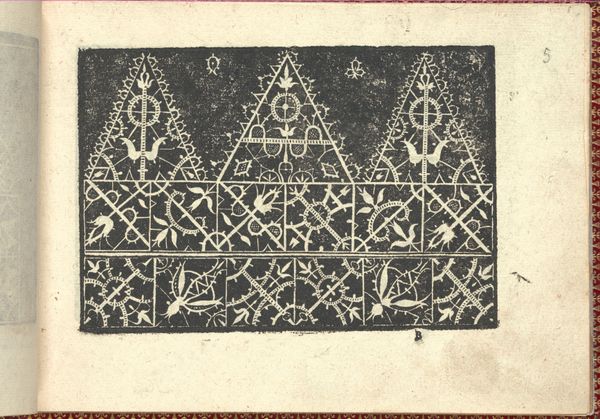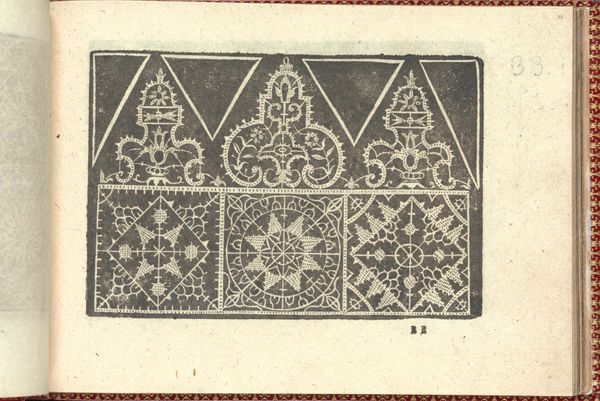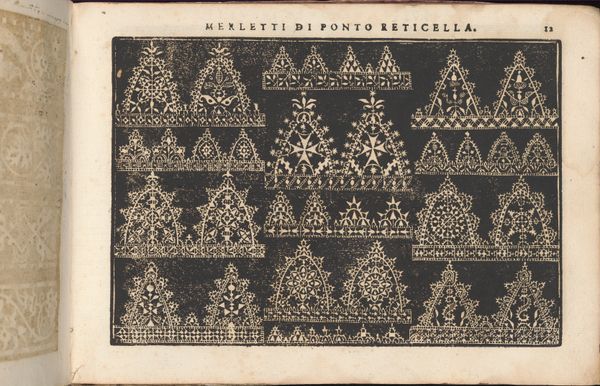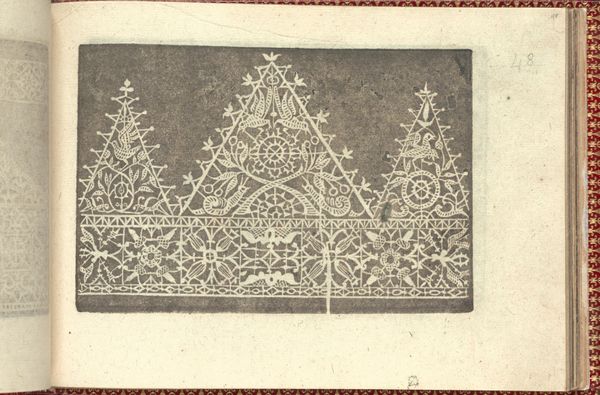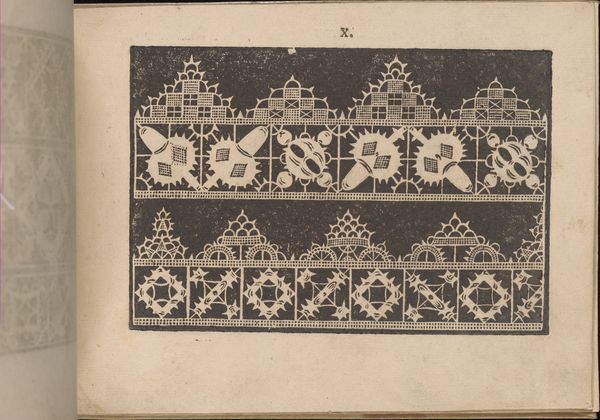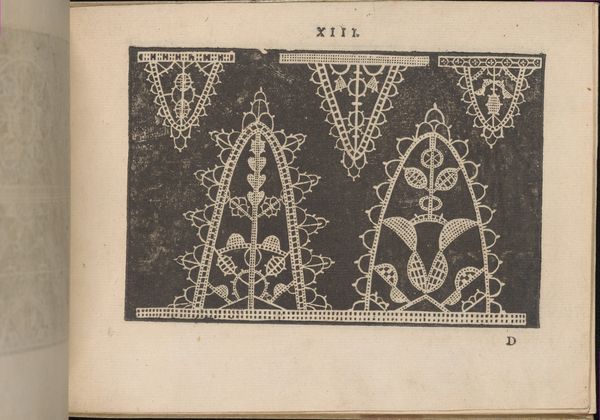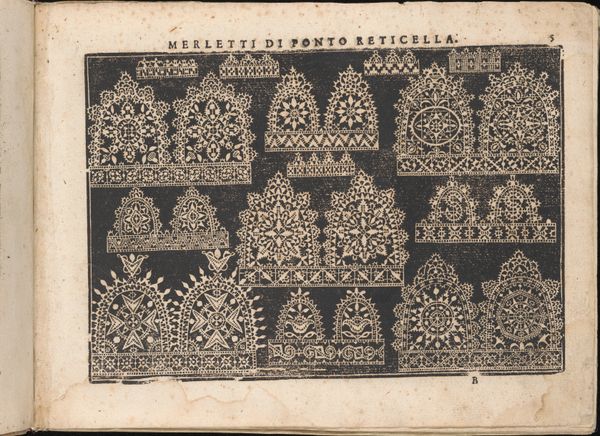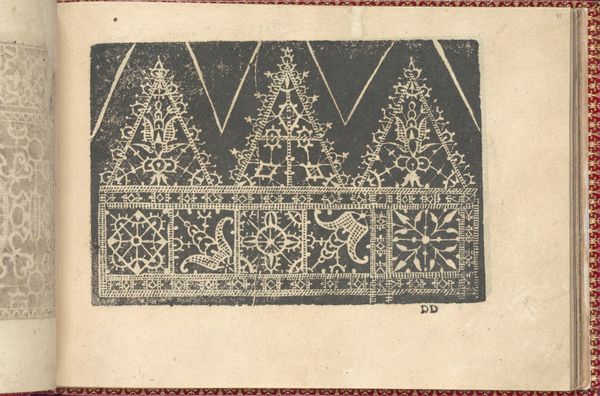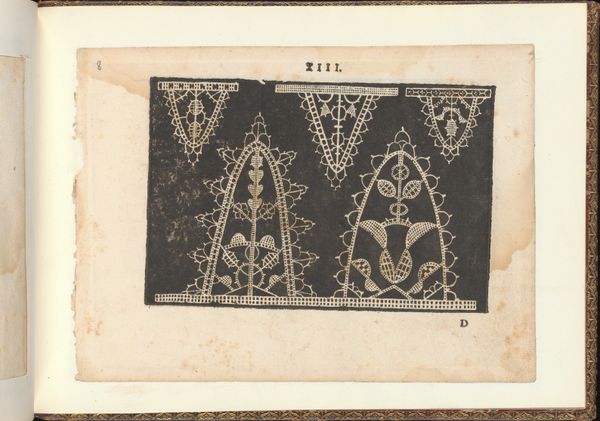
Prima Parte de' Fiori, e Disegni di varie sorti di Ricami Moderni, page 7 (recto) 1591
0:00
0:00
drawing, ornament, print, intaglio
#
drawing
#
ornament
# print
#
intaglio
#
11_renaissance
#
geometric
Dimensions: Overall: 5 5/16 x 7 5/16 in. (13.5 x 18.5 cm)
Copyright: Public Domain
Curator: This delicate print, dating back to 1591, is a page from "Prima Parte de' Fiori, e Disegni di varie sorti di Ricami Moderni" by Giovanni Battista Ciotti. The image, rendered as an intaglio print, features a series of intricate lace designs. Editor: Immediately, I'm struck by the repetition of geometric shapes. The triangles and other symmetrical figures almost seem to vibrate against the dark background, don't they? Curator: They do. It's fascinating to consider this page within its broader social context. Lace-making was a significant industry at the time, a painstaking manual labor, largely performed by women. This book was designed to provide patterns and stimulate creativity. Editor: Precisely! Look closely and you'll see each design presents a unique iconographic program. A repeated symbol such as the fleur-de-lis becomes abstracted in some examples while staying grounded in its familiar form in others. Curator: Absolutely, while each individual element could be imbued with symbolic meaning depending on its cultural context, consider that the book itself played a practical role, functioning almost like a modern pattern book. Each impression of the page involves a process of labor. Editor: The designs vary so much, from the strictly symmetrical and contained triangles to those with organic, floral-inspired flourishes that nearly overflow. It's a dialogue between order and nature, isn’t it? And what does that tell us about Renaissance ideals of beauty? Curator: I'm drawn to how this print simplifies the original act of creation. It highlights how such designs, regardless of the specific symbol system involved, are still bound by technical considerations during production. The quality of the impression matters to the person employing the pattern. Editor: Looking at it this way, I can also see that it isn't just an exercise in aesthetics, but also an exercise in psychology. By reproducing specific figures across different arrangements, what response do the image's creators or eventual users hope to trigger in the eye and the mind? Curator: In the end, this isn’t simply a collection of lace patterns; it represents countless hours of labor. It’s an imprint of a historical process—both creative and productive. Editor: Yes, it’s an intimate glimpse into the way patterns speak across generations. Each form in "Prima Parte" offers a rich and continuous dialogue with our cultural memory.
Comments
No comments
Be the first to comment and join the conversation on the ultimate creative platform.
